I was responding to berf's post about her layout that included moving rooms around along the lines of "are you sure that you can afford it" and I remembered the New York Times article that I had sitting on my table each time I interviewed a design/build company, GC, or architect. (Update to story: Despite all attempts to have a design built to my budget, I failed.)
By the way, this is not intended as an endorsement of design/build firms which are discussed elsewhere on GW.
Anyway...here is the article. I hope it helps others from this big trap.
February 17, 2007
Short Cuts
The Pain of Paying (a Lot) for House Plans You Dont Use
By ALINA TUGEND
Correction Appended
A few years ago, when the charm of sharing a room with his brother had worn off for our older son, we decided to look into remodeling.
We had a budget of about $20,000 and a goal to give each son a room of his own. We hired an acquaintance who was an architect to draw up some plans within that budget. The idea was to create a dormer window in our multipurpose room and then possibly divide it into two small rooms.
The bids from contractors started coming in, with not one under $40,000, and some topping $50,000. It also turned out, as one contractor noted, that we would probably have to strengthen our living room beams, which the dormer would rest on, adding more to the cost and the overall disruption. (It was a little worrisome that the architect and other contractors had not noticed this.)
So, after paying more than $1,000 for architectÂs drawings, we decided to go another route  revamping a guest room into a third bedroom  and dropping the dormer idea altogether.
It was the first time we had used an architect, and I did not think much about it, except to be glad we hadnÂt spent more money.
Then I started hearing similar stories.
"We bought our house in 2001, planning to do a two-story addition," said Victoria Lesser, who lives in Larchmont, N.Y. "Our budget was a really flat $150,000."
Before even moving into their new house, Ms. Lesser explained what she wanted to an architect she found through friends. But when the bids from the contractors started rolling in, they hovered around $300,000.
"I felt so misled," she said. "We would never have bought the house had we known  we would have put the $150,000 into buying a bigger house."
They still ended up paying the $18,000 the architect charged for the drawings.
"It was such a waste of money," she said. "It killed me."
Ms. Lesser and her husband ended up remodeling on a much smaller scale, and now, she said, their only hope of recouping the loss from the architectÂs drawings is to include them as part of a deal when and if they sell their house.
A surprising number of people shared similar tales of sitting down with an architect and planning a project over months, then finding out, once the drawings were done, that the bids were way out of whack with what they could afford.
"It happens a lot," said Nina Patel, senior editor of Remodeling magazine and deputy editor of Upscale Remodeling.
Naturally, architects and homeowners have very different perspectives on why this can happen.
One problem, said Andrea Cioccolanti, an architect based in Newton, Mass., is that unlike Ms. Lesser, many homeowners who are doing renovations feel reluctant to say what their budget is, "which is like having to design in the dark."
Ms. Cioccolanti said once the process begins, clients also are often unwilling to cut back.
"They donÂt want to compromise, and thereÂs no sense of reality, and then theyÂre frustrated they canÂt afford it," she said. "While itÂs very human, itÂs also very unfortunate."
It often helps to make sure a contractor is on board from the start to help keep both homeowner and architect in check. "An architect should talk from the beginning about what itÂs going to cost," said Andrew Garthwaite, a partner in the architectural firm of Haynes & Garthwaite in Norwich, Vt.
If a contractor is involved early on, "he can double-check what an architect says," Mr. Garthwaite said. "Much more than the architect, he has his finger on the pulse of the real costs."
But even that does not necessarily avert trouble. My sister, who lives in La Jolla, Calif., wanted to put a $250,000 addition on her home. She worked with an architect and contractor and had plans drawn up for a total of $30,000 Â and had even gone so far as to submit them to the city for permits.
To her shock, when the bids started coming in, they were double that estimate; almost $500,000. She and her husband ultimately had to shelve the project.
"It turned out the electricity had to be almost completely rewired, which meant tearing down a lot more walls than we planned," she said. "But I donÂt know why this wasnÂt figured out in the first place."
Mr. Garthwaite said architects often created a menu of items to let homeowners eliminate those that are the least painful. It is not so difficult to cut a project down by 10 percent of its cost, he said, but "you have to do something pretty drastic to get 20 percent out."
One factor that is very hard to keep under control is cost of material and labor; architects estimate that the cost of construction goes up 20 percent every year.
Leslie Pepper saw firsthand how zooming prices affected her planned remodeling project.
Three years ago, when pregnant with her third child, she planned to add another bedroom and make some other changes to her Long Island house.
She hired an architect that her sister-in-law had used.
"I guess I should have interviewed more than one person," she said.
She started getting contractor bids ranging from $140,000 to $210,000, which did not include bathroom fixtures and appliances, making it more than she could afford.
"We looked at our finances and said, ÂWhat, are we nuts? " Ms. Pepper said. "We had delusions of grandeur. The ball keeps rolling and everyone around us is doing big renovations and I got caught up in that."
Also, the process from first meeting with an architect to final plans can take from six months to a year and much can change, as Ms. Pepper found out.
"When I first started, the home equity rate was extremely low," she said. "When the plans were all worked out, it started going up."
At the same time, oil costs were skyrocketing, and hurricanes were hitting Florida, affecting the cost and the supply of materials.
"Materials had gone sky-high," she said.
Ms. Pepper ended up doing a smaller remodel for about $75,000 and not using the $8,000 worth of architectural plans, which are sitting in her closet.
One of the ways to avoid being surprised by the costs is to go with what is known as a design-build firm; one that does both the designing and building, so there is no sticker shock at the end.
Design-build firms can work in a number of ways, depending on the project; they can subcontract to architects, use stock plans or use a draftsman who is not a licensed architect. ItÂs important to know what your municipality requires, however; some allow only licensed architects to file plans.
"One of the perceived disadvantages of design-build is that you have all your eggs in one basket," said William Quatman, chairman of the American Institute of ArchitectureÂs Design-Build Committee. "Homeowners like an architect to keep an eye on construction." If they hire a design-build company, "they can feel, ÂWhoÂs looking out for me? It requires a great leap of faith."
Not only is an architectÂs job to draw up plans, but she acts as the homeownerÂs advocate and oversees construction to ensure the contractor adheres to the drawings.
In addition, those who want top-end remodels usually are more interested in "high design" and name architects, Mr. Quatman said. He said, however, that there are many times that design-build firms may be a better option than an architect.
One advantage, Ms. Patel said, is that design-build firms can have a much better sense of the real cost of labor and materials than an architect.
One way to avoid nasty surprises is to understand how architects work. Interview at least three or four, even if your best friend, sister or neighbor swears by one. Find out how she is paid. There are many different compensation methods; for example, as a percentage  usually ranging from 10 percent to 15 percent  of the construction costs; an hourly fee; an overall flat fee; or costs calculated on square footage.
What is the architectÂs experience and track record with cost estimating? Talk to past clients about that and about her communication skills.
As for us, I think weÂll wait a while until we plunge into the world of renovation again. Now each boy seems satisfied with a room of his own; once they are teenagers we may need to take another look at the basement.
E-mail: shortcuts@nytimes.com
Correction: February 20, 2007
The "Short Cuts" column in Business Day on Saturday, about architectural plans that go beyond a homeowner's renovation budget, misstated the name of a professional organization whose chairman commented on using firms that design and build instead of architects. It is the American Institute of Architects, not the American Institute of Architecture.

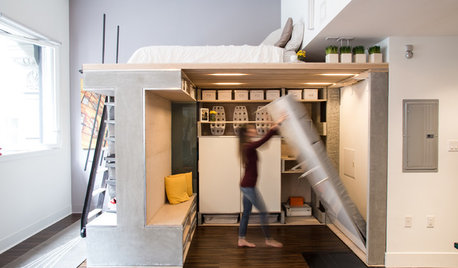

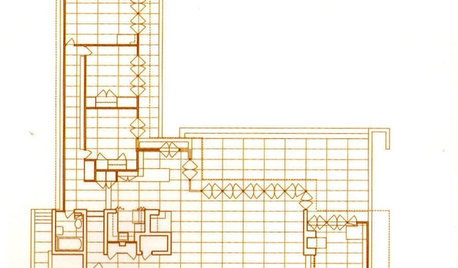
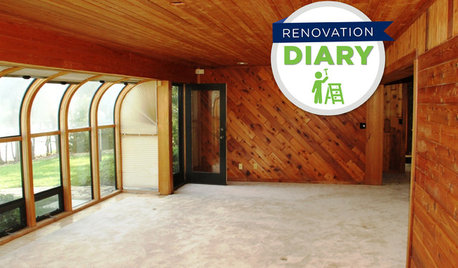



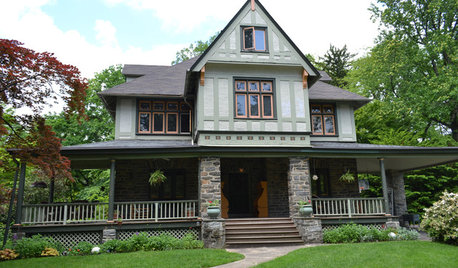
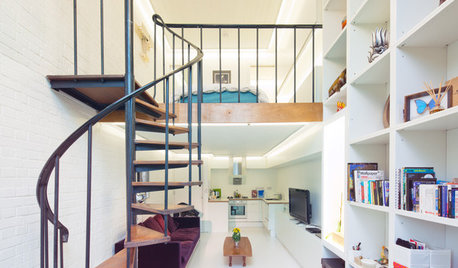




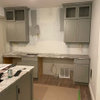


brmjandme
Related Discussions
My architect. Can't live with her, can't live without her.....
Q
Serious range hood quandry - can't afford 'good'
Q
Can't afford flooring so need to plan for future
Q
Can’t build dream plans, need big help reworking!
Q